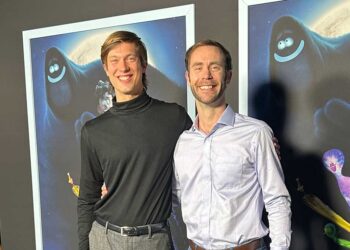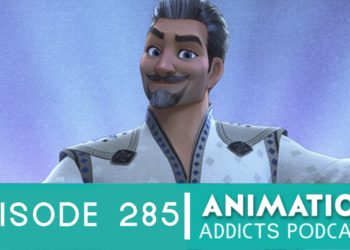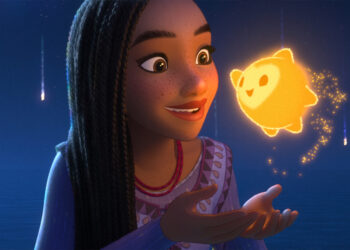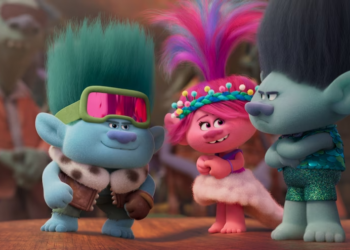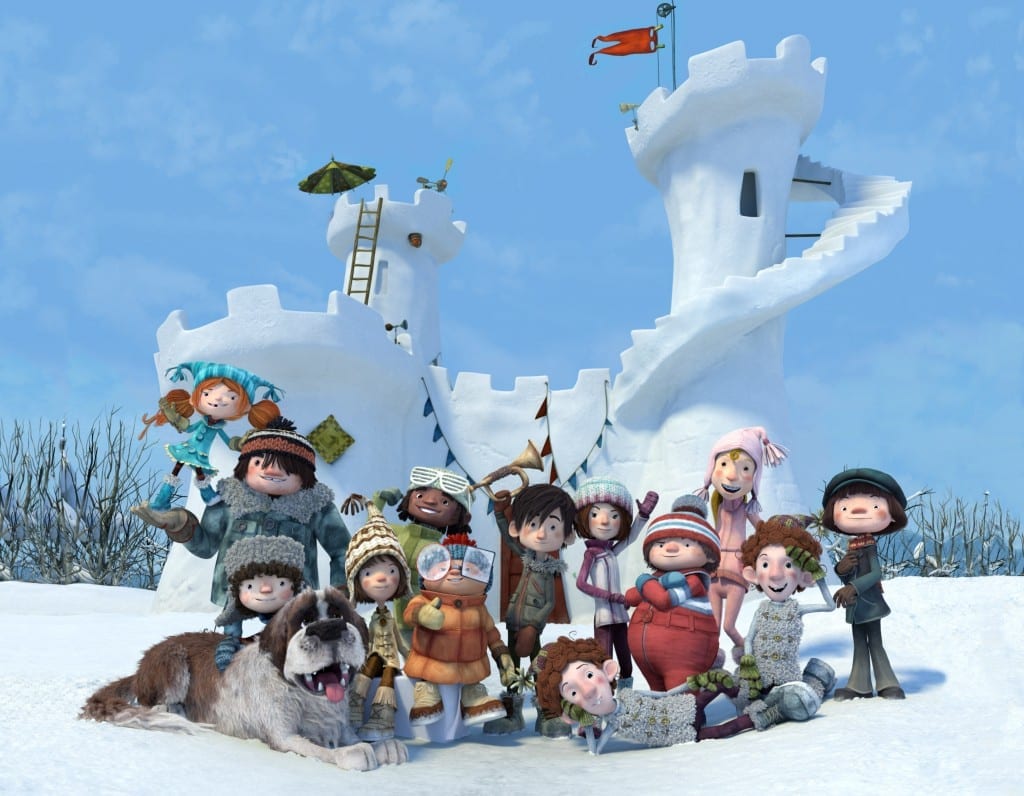
Last weekend, I had the unique opportunity to attend the Sundance Film Festival and the US English premiere of an animated feature film entitled Snowtime! This is a delightful little movie about a group of kids who wage battle over their neighborhood snow fort. It features the voice talents of Sandra Oh and Ross Lynch and songs by Celine Dion, Simple Plan, and more.
For the uninitiated, here is the trailer for Snowtime!:
They are doing a release in over 50 cities starting February 19th and I had the chance to interview director Francois Brisson and producer Marie-Claude Beauchamp about the film, its message, and their approach to making an independently animated film.
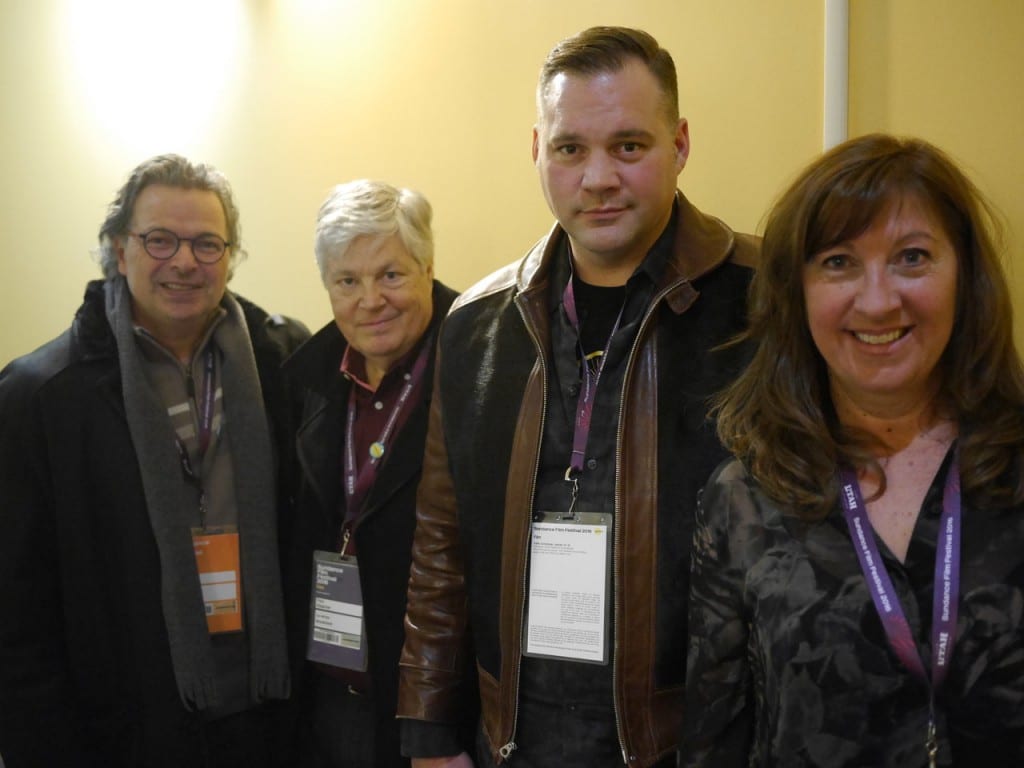
Marie-Claude Beauchamp: Children are the best. They are so great. They are so on it. They are so true. They are not going around and about. They are going for the real thing and you always appreciate that.
Rachel Wagner: One thing I wondered about is you don’t see that many animated films about children. Most of them are about adolescents—your Disney princesses and things like that. So I was curious what your thoughts were about making children the leads. Do you worry that will ostracize and make it only a kids’ film?
Marie-Claude Beauchamp: Well, the film is a family film, but then again it speaks to children in a very intelligent way. We feel that we’re not talking down to kids. This is what makes it a family audience because we are talking true. We’re talking directly to them and because the film carries a lot of emotion, it’s emotion that they’ve had. That they’ve experienced but they’ve not seen characters experience it necessarily at the same age that they are. So that’s very important that kids see themselves, not just the older, not just what they are going to become. We like things to be in the present, and they should be growing within their time period, not just hoping to get to their teenage years. So the film suggests that. The film suggests you can be a kid and you can stay a kid until you are a teen. You don’t have to be a teen before your time.
Rachel Wagner: It reminded me a little bit of The Peanuts Movie in that way.
Marie-Claude Beauchamp: Yes, it has some similarities for that.
Rachel Wagner: Were any of the kids based on either yourself as a kid or your own children or children in your lives?
Marie-Claude Beauchamp: Not exactly because the film is a remake of a film that was done in live action 30 years ago, so the characters remained mainly the same. We had to make them evolve because we had to adapt to the values of today. So obviously 30 years later, there’s a difference between today and then with social values, family values, all that. So, yes there was some changes to the characters, but the core of them was established 30 years ago.
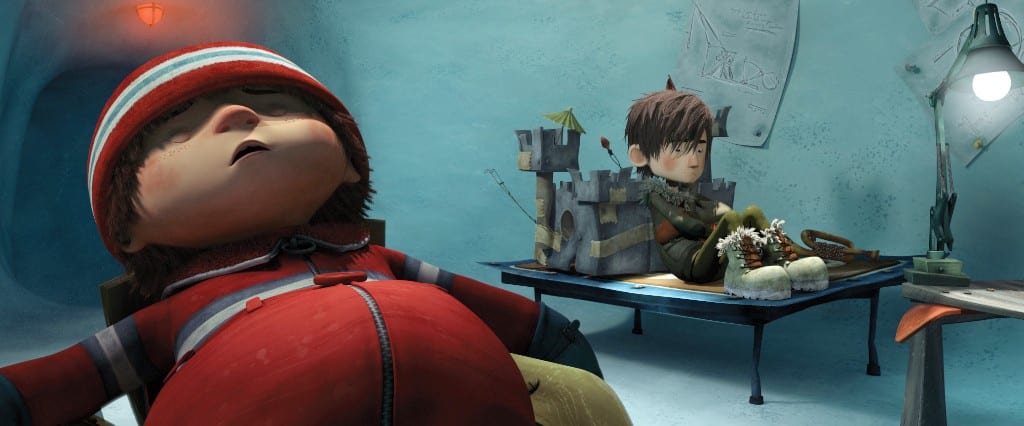
Rachel Wagner: And the character design? How did you come up with them? I particularly liked Lucy with the red hair.
Marie-Claude Beauchamp: Yes. Well, I think that what’s important to say about the design is that we wanted the character to be warm. We didn’t want the character to be shiny and plasticy. We wanted it to feel like they were real people. So the suggestion of the art director was to keep some penciled trace in it. Francois can talk about it more because obviously he supervised that part
Francois Brisson: [The art director] because he’s an illustrator for children’s books he has a very strong style with himself. And the style is very like in watercolor and colored ink. So we thought, we need to keep that as we textured the characters.
Marie-Claude Beauchamp: And keep the warmth of it.
Francois Brisson: Keep it organic
Marie-Claude Beauchamp: Without being sophisticated to the point that everything had to look real. We still wanted it to be an imaginary world because we were carrying important subjects and important emotions. We still wanted the children to have a projection into those characters and not necessarily being too realistic to the point that it would make them sad. Yet again, it’s realistic enough they could see themselves.
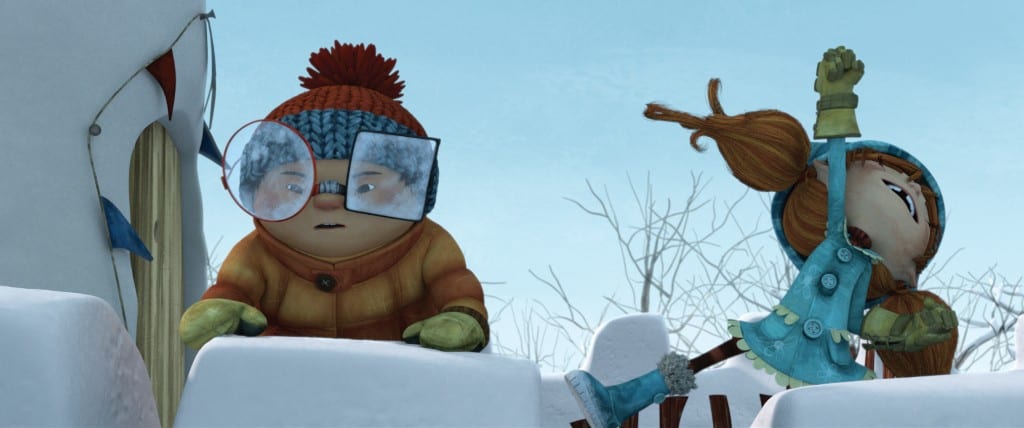
Rachel Wagner: Are you concerned about it being too sad in that it deals with themes of grief?
Marie-Claude Beauchamp: I could say that the film has been released in the French version in Quebec. We had the biggest box office. We actually had more of a box office than Spectre, the James Bond film! And the audience were children, so we have experienced it with children in a lot of ways . The parents are more worried about their children being sad but the children want to understand what it is. They ask ‘why are you so sad when someone dies?’ Now they can experience it. Now they can actually talk about it. Share. Discuss it. It becomes something they will carry on with their lives. It’s also how the film became so known in memorial to a whole generation because they learned. I was brought up on Bambi. I cried on Bambi. Now you can experience that here.
Francois Brisson: And also in the original film there was not much happening once the death occurs. We took that breathing time, and gave them longer to take it in.
Marie-Claude Beauchamp: It brought it to the hope moment. Because the last scene is about hope. It’s about friendship. It’s about overcoming sorrow. And the song which is a very important—a song which Celine Dion sings for us. We wrote the words and we did it for the film and she gratefully agreed to sing it for us, but it is a song that tells you “You will grow bigger. You will grow stronger because you will have this memory with you.”
Rachel Wagner: Yeah, I was going to ask you about the music. Also was there a film that really inspired you or that you were looking at? Maybe a favorite Disney film or anything you were looking at that inspired you?
Francois Brisson: No.
Marie-Claude Beauchamp: There were two films we kept on bringing up when we were working. One was Coraline and the other one was ParaNorman because the way that those independent films made it through. But also because they took time with real subjects within those films and weren’t just about a ‘joke for Mom, a joke for Dad, and something for the kids’. It was something really for the kids
Francois Brisson: And also my take on it is I want to have a style of animation that is unique—its own feel. That’s not a major studio type of animation. It’s not another Japanese style of animation. It has its own imagery. And also these kids don’t walk or move like others, and they have these big boots, so we had to deal with that. Make it so that is part of the character also.
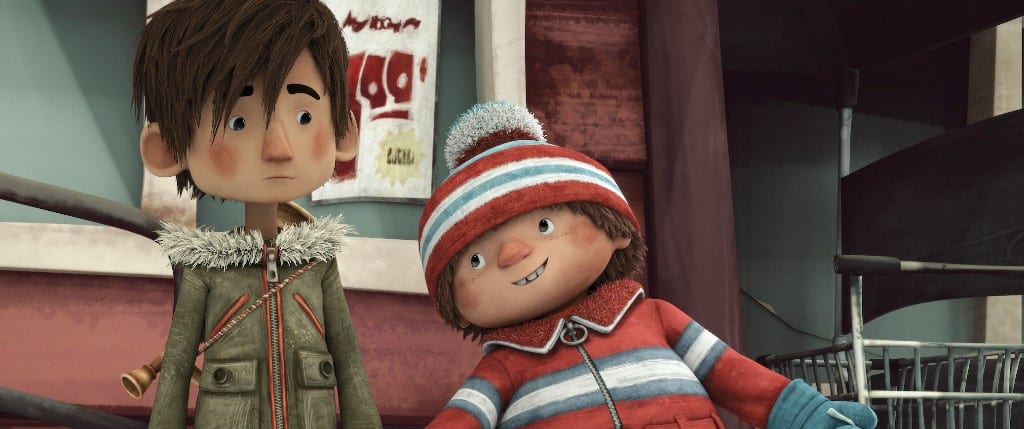
Rachel Wagner: What’s the main message you hope kids take away from the film? Dealing with grief? Are there any other messages?
Marie-Claude Beauchamp: Yes, for us, we are looking at children that aren’t playing outside any more. They don’t know how to play in a group. They know how to play alone or with one brother but organizing games, being responsible, taking the lead into organizing stuff outside is something children are losing as a reference. And we want them to go and play snow time. We want kids to say, “Oh let’s go and play snow time!” as if it was a game. And they are going to go out and build forts, and slide, ride, and do snowballs. We want them to reappropriate the pleasure of play.
Francois Brisson: Like what I did when I was a kid myself. We were playing outside all the time. Going back home? No, no, no, no.
Marie-Claude Beauchamp: Just for a soup and then back out!
Francois Brisson: We didn’t watch TV that much or anything.
Rachel Wagner: I like that line about ‘we don’t want to be just sitting around’.
Marie-Claude Beauchamp: Yeah, and having brain cells not being produced! We think that being outside has more usage for itself.
Rachel Wagner: Well, and I also liked that you had the whole community of kids as opposed to more sort of cliquish kind of things. You had different ages playing together.
Marie-Claude Beauchamp: Nationalities as well.
Rachel Wagner: That’s something that gets lost I think when you have too much of the soccer – the scheduled, the planned activities as opposed to play.
Francois Brisson: Exactly.
Marie-Claude Beauchamp: Yes, free play. Inspire yourself. Tell yourself stories and adventures.
Francois Brisson: Don’t be afraid of doing that.
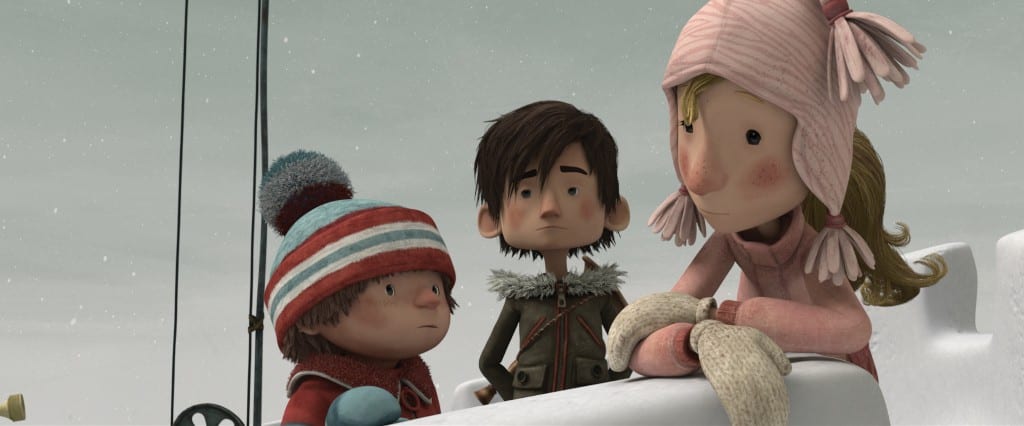
Rachel Wagner: What’s your distribution plan? Are you working with a distributor?
Marie-Claude Beauchamp: Yes, our distributor is called Shout Factory. It’s the US distributor. We are coming out February 19th in the US in more than 50 cities. Right now, English Canada is also going to do it at the same time. We’ve done Quebec but we’ve also been released in Russia, Bulgaria, Estonia, Lithuania. It’s all starting now so it started right before Christmas and all through the winter; we are having releases everywhere around the world.
Francois Brisson: You should see the Russian version.
Marie-Claude Beauchamp: Yes, that’s interesting!
Rachel Wagner: It does seem like a movie that would translate well.
Marie-Claude Beauchamp: It does because it’s about kids so that’s very relatable. Internationally it’s very relatable. When it comes to kids, they’re not that different from one country to another.
Rachel Wagner: The original film. It was something you had known quite well?
Marie-Claude Beauchamp: Yes, and I had known the producer for a very long time. And when he was given a petition of 11,000 names of people who wanted a remake he thought that animation was the best vehicle to do a remake. He came to me and we put it together.
Rachel Wagner: Is this your first animated film?
Marie-Claude Beauchamp: No, this is my 3rd animated feature. I did a feature about 15 years ago which was called Pinocchio P3K, and 3-4 years ago we released the Legend of Sarila, and now this third film.
Francois Brisson: My background is all animation. I worked more in television and some films.
Marie-Claude Beauchamp: And he’s also one of our best storyboard artists in Canada.
Francois Brisson: All the shots you saw in the film, I drew.
Snowtime! releases in over 50 cities nationwide on February 19. Read our full review of the film here.
Edited by: Kelly Conley



